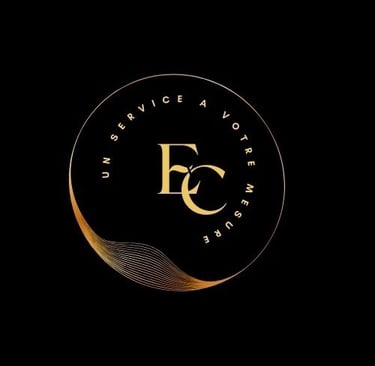Marketing vs. Customer Experience: When Consultants and Sales Reps Cross Swords for Success
Dive into the lively debates between marketing strategy consultants and customer experience experts. Learn how their disputes drive sales leadership and lead to innovative, effective solutions.
MARKETING
Lydie GOYENETCHE
1/5/20256 min read


When consultants compete: Marketing vs Customer Experience, clash and compromise!
Today, we take you behind the scenes of two often complementary but sometimes opposing professions: marketing strategy consultant and customer experience consultant. To illustrate their work and their debates, we imagined a fictitious joint intervention within Danone, a multinational company committed to sustainable food. Hang on, the exchange promises to be lively and spicy!
Reporter: Thank you both for having us. To begin with, can you introduce yourself and explain your respective roles?
Marketing Strategy Consultant: Of course! My name is Claire Dupont, I have been a marketing strategy consultant for eight years. My job is to help companies optimize their positioning, brand portfolio and advertising actions. My goal is to maximize their return on investment while increasing their market share.
Customer Experience Consultant: And I'm Thomas Leroy, who has been specializing in customer experience for five years. My role is to ensure that every interaction between the company and its customers is smooth, consistent and enjoyable. I work to reduce irritants, increase satisfaction and, ultimately, build customer loyalty.
Interviewer: So you're both consultants. What makes you different in the field?
Claire (Marketing): We have different perspectives. For example, if Danone wants to launch a new range of organic yoghurts, I will analyse consumer trends, identify target segments and develop a 360° marketing plan to maximise the impact of the campaign.
Thomas (Customer Experience): I focus on what happens after the launch. If customers have problems finding the product or don't perceive it as eco-friendly, it's a missed opportunity. My job is to make sure that everything from the packaging to the online shopping experience meets expectations.
Claire: (laughs) And that's often when Thomas criticizes my work...
Thomas: Not at all... Well, maybe a little. But it's constructive, I promise!
Interviewer: Why has investing in customer experience become a priority for companies?
Thomas: That's a great question. Investing in the customer experience means ensuring that every interaction with the brand generates satisfaction and, ideally, loyalty. Today's customers have much higher expectations. If you don't meet their needs, they will look elsewhere. For example, 80% of consumers say that a bad experience can be enough to stop buying from a brand.
Claire: Thomas is right. As a consulting firm, we see more and more companies understanding that customer relations are not only a cost center, but a strategic lever. That said, these investments must also be consistent with the brand's other actions, otherwise it's money thrown out the window.
Thomas: And that means concrete projects such as the creation of a well-thought-out loyalty program, or better project management to integrate the customer experience into all internal processes.
Reporter: Let's talk about a concrete case. You worked together at Danone on the range of plant-based drinks. How did this collaboration go?
Claire: Initially, Danone wanted to meet a growing demand for alternatives to animal-based milk. I developed a strategy targeting young urban workers, with modern branding and an advertising campaign focused on the benefits for the planet.
Thomas: When I took over, the product was already on the market. But very quickly, the customer service teams reported negative feedback. Consumers found the label difficult to read, some did not understand if the product was gluten-free... In short, a gap between the marketing promise and the real experience.
Claire: That's where we got our ... first argument.
Thomas: (smiling) Yes. I argued that marketing teams had put too much emphasis on image at the expense of clarity.
Claire: And I replied that the customer experience couldn't correct all the details after the fact... In short, a compromise had to be found.
Journalist: And what did this compromise lead to?
Thomas: It resulted in endless meetings with post-its everywhere. Claire wanted to add storytelling to the label, and I told her: "Customers don't have time to read a novel in the refrigerated section!"
Claire: (laughs mockingly) And Thomas wanted to put pictograms for everything: gluten-free, lactose-free, palm oil-free, pleasure-free too, perhaps?
Thomas: (provocative smile) Yes, but at least they understand! The customers are clear. Not like some marketing briefings...
Claire: Oh, because customer feedback is always clear, perhaps? When someone writes "Not bad, but well", does it make you move forward?
Interviewer: How do you rethink your customer experience to meet customer expectations?
Thomas: It all starts with a digital transformation of internal processes. For example, integrating real-time customer feedback analytics tools can really help identify irritants quickly.
Claire: And you have to anticipate from the design phase. Project management aligned between marketing and customer experience is crucial. What's the point of launching an innovative product if the shopping experience leaves something to be desired?
Thomas: Right. Once the foundations have been laid, it is essential to regularly measure the impact of actions. What results does the loyalty program generate? How do customers perceive the new offers? The consulting firm you work with should be able to provide accurate answers to these questions.
Interviewer: Why has customer loyalty become a strategic issue?
Sofia: Today, consumers are no longer just buying a product or service; They want a relationship of trust with the brand. A loyal customer is not only the one who returns, but the one who actively recommends the brand to those around them. That's why customer satisfaction should be at the heart of loyalty programs.
Marc: Exactly. Loyalty is much more than points or discounts. This requires a global strategy that follows the customer's engagement throughout their customer journey. Every interaction – from purchase to after-sales service – should strengthen this bond.
Lucie: And let's not forget that retaining a customer is much cheaper than acquiring a new one. Investing in a well-thought-out program can have a much higher return on investment than a typical customer recruitment campaign.
Interviewer: What do you think a good loyalty program is?
Sofia: A good loyalty program goes beyond classic rewards. It needs to adapt to the customer's level of engagement and offer benefits that make sense to them. For example, an ethical cosmetics brand could offer loyalty points for packaging returns or offer personalized online workshops for its most loyal customers.
Marc: I would add that an effective program is based on extensive customization. With today's digital tools, a brand can analyze purchasing behavior, identify customer preferences, and provide them with relevant offers or rewards. This is where strategy consulting plays a key role: structuring a program based on data, not guesswork.
Lucie: Absolutely! But for this to work, the customer must feel a real relationship of trust with the brand. If the benefits of the program are unclear or if the commitment requested seems disproportionate, it can create frustration.
Interviewer: How do you track consumer engagement with a brand to optimize a loyalty program?
Lucie: Tracking customer engagement is based on precise tools and indicators. For example, analyzing the participation rate in the program's promotions, the number of interactions with the brand's emails, or the frequency of purchases.
Sofia: Yes, and it's essential not to limit ourselves to the raw numbers. Sometimes a customer doesn't buy much but is very emotionally engaged with the brand. In this case, encouraging them to share their experience on social media or participate in exclusive events can build loyalty.
Marc: This ties in with the idea that customer relations should be thought of as a dialogue. The more you listen to your customers, via surveys, feedback or qualitative studies, the better you understand their expectations. That's how you improve a loyalty program.
Interviewer: Do you have an example of a brand that has managed to build customer loyalty through an innovative program?
Sofia: Yes, an appliance brand recently launched a program based on ecological commitment. Customers earn points by registering their products, watching tutorials to better care for them, or participating in recycling initiatives. As a result, 70% of registered customers bought another product from the same brand in the following two years.
Marc: Another interesting example is that of a supermarket chain that has integrated a community dimension into its program. In addition to discounts, members could participate in workshops, vote for new products, or influence brand choices. This strengthened their sense of belonging.
Lucie: And all of this is based on well-orchestrated project management. These programs only work if all the teams – marketing, customer experience, support – work hand in hand.
What advice do you have for a company that wants to launch or improve its loyalty program?
Sofia: First, think about what really matters to your customers. If your program doesn't meet their expectations, it may fall flat. Then, set up a precise monitoring to measure the impact of the program on customer loyalty and satisfaction.
Marc: Also think about incorporating non-financial rewards. Customers often appreciate exclusive benefits such as invitations to events or priority access to new products. This reinforces their commitment to the brand.
Lucie: And above all, don't think that the program is set in stone once launched. Evolve your offerings based on customer feedback. Good customer experience advice can make all the difference in adjusting and optimizing your actions.
An effective loyalty program is based on a thorough understanding of customer expectations, regular monitoring of customer engagement, and constant personalization of benefits. By combining a well-thought-out strategy with impeccable execution, brands can turn their consumers into true ambassadors, while strengthening their long-term satisfaction and loyalty.
What advice would you give to companies that want to collaborate with consultants like you?
Claire: Clarify your goals and involve all stakeholders. Otherwise, you may see us arguing in front of your teams, and it can get very funny... For you!
Thomas: And most importantly, let us collaborate from the beginning. Otherwise, it always ends up with complicated catch-ups.
Conclusion:
In marketing as in customer experience, listening and collaboration are the keys to success. And if you're still hesitating to call on experts, remember that their complementarity could well transform your projects. So, are you ready to take the plunge?


EUSKAL CONSEIL
0033782505766
euskalconseil@gmail.com
This website uses only Plausible Analytics, a privacy-friendly web analytics tool.
No cookies are used, and no personal data is collected from visitors.
The system is fully compliant with the General Data Protection Regulation (GDPR), the ePrivacy Directive, and CNIL recommendations.
You can read more about Plausible’s data policy here: https://plausible.io/data-policy